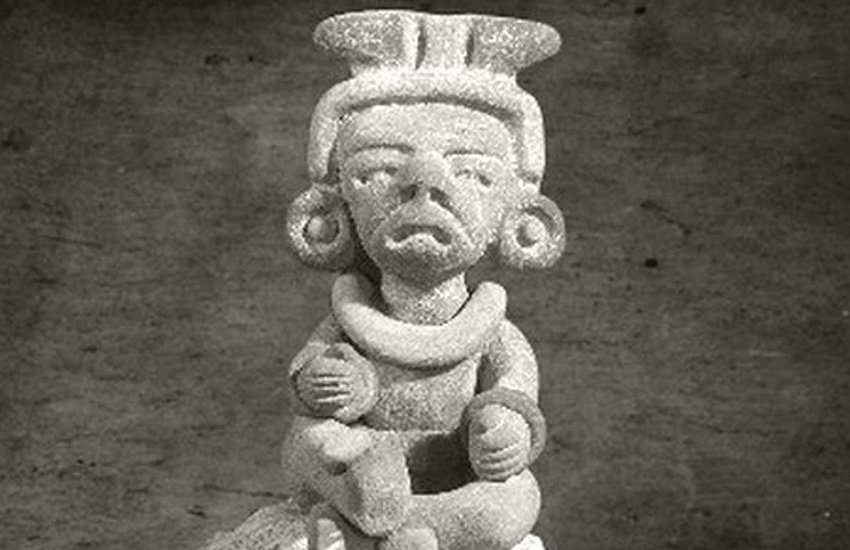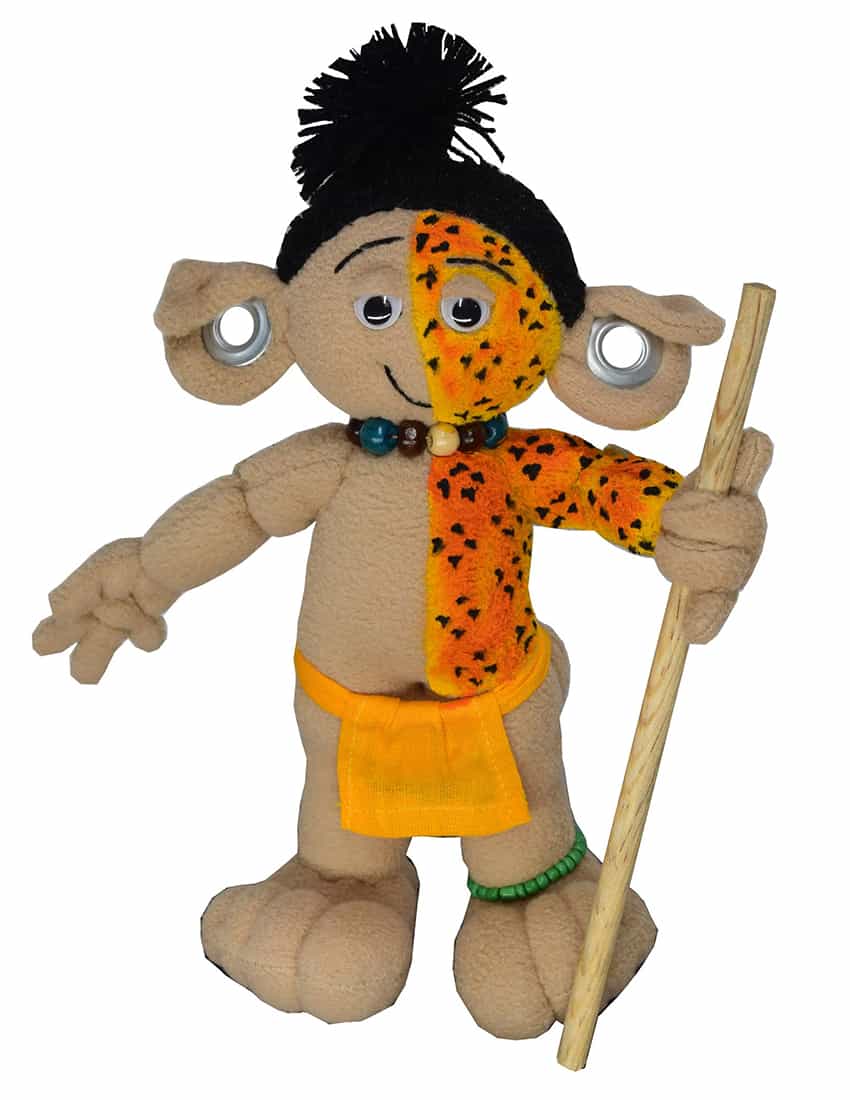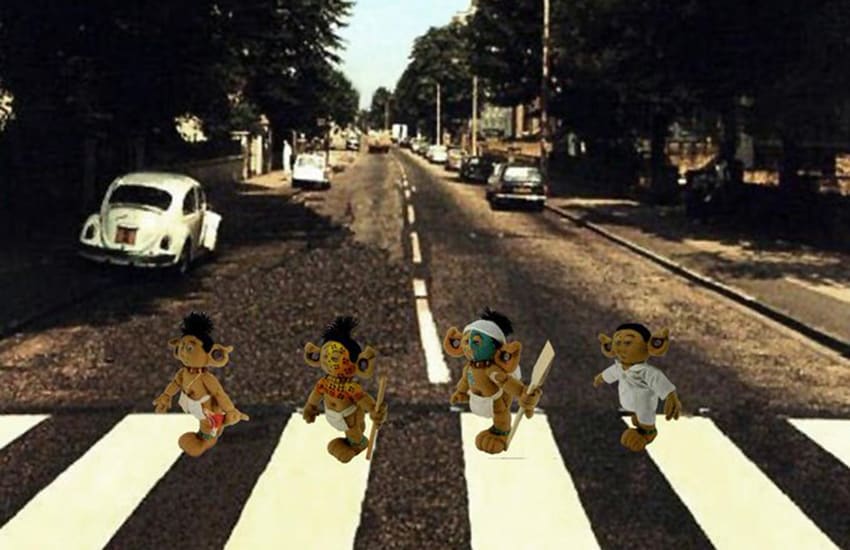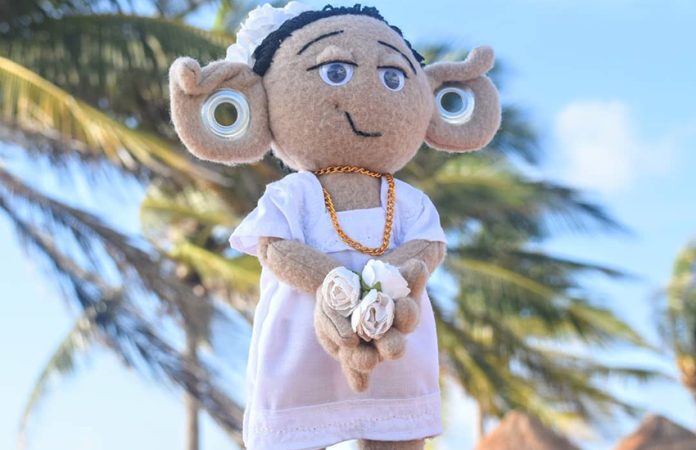I first saw Aluxin dolls — the troll- or elf-like figures created by Mexico City native Javier Alba — at the Doll Museum in Amealco, Querétaro, the closest thing Mexico has to a national doll center. Being so different from the others on display, they caught my attention.
With their small size and features, there is no doubt that these dolls bear influence from the troll dolls popular in the 1970s and the popular Smurfs cartoon characters. But Alba, who began making these dolls in 2012 after he moved to Cancún, combines such modern influences with that of Maya stories of magical little people called aluxes, from which he got his craft business’s name, Aluxin.
In Cancún, Alba became fascinated by the stories of these mythical creatures and their link to ecology.
According to Maya legends, aluxes (pronounced a-LU-shes), are supernatural creatures created by the Mayan god Yum Kaax — a Maya deity of wild vegetation and the animals living in it — to help people who worked hard in the fields.
Although their main role is to protect crops, they also care for local forests and animals. The concept is not unlike those of dwarves and leprechauns.

Some legends state that aluxes were Earth’s first inhabitants, even older than the sun. Perhaps for this reason, traditional depictions, such as those on temples in Yaxchilán, Chiapas, and Cobá, Quintana Roo, depict them as old with facial features designed to be both terrible and friendly since they could go either way depending on the circumstance.
To assure the better natures of aluxes, Mayan farmers would make an alux figure from clay and place it in the field before it was sown. If the farmer respects them, and nature in general, he is rewarded with abundance.
Such beliefs extended over all Mayan territory — southern Mexico into Central America.
Javier Alba and his partner Miriam León forgo the “terrible” aspect of aluxes. The idea of the dolls came out of a need to make a living, not preserve ancient Maya culture. The obvious market is tourists in Cancún, hence the need for the kitsch.
But decisions about how to make the dolls were not pure business ones. After Alba and León designed the series, they were advised to have them mass-produced in China; but this did not seem right to them.
Despite the changes to the traditional image of the alux, the figures are still an idea from an ancient Mexican culture, and many people in the Cancún area still live in poverty, especially the elderly and single mothers.

Despite being a significantly more expensive process, in 2013 Alba began to have the dolls made by locals, using a piecework system. Dolls are made in homes, with training and materials provided to the craftspeople.
Many of the dolls popular in Cancún are made with cotton or mixed-fiber commercial cloth, but there are versions made from hennequin (similar to burlap), a fiber that was the base of much of the Yucatecan economy in the 19th and early 20th century.
A craft like cloth dolls, along with the business model Alba employed, makes Aluxin a bit controversial as a Mexican handcraft. Mexican anthropologists divide handcrafts into two categories — artesanías (those with a significant history and “cultural significance”) and manualidades, those which do not.
Cloth dolls are generally categorized by many museums as manualidades because they mistakenly believe such dolls were not made in the country until very recently. Aluxin’s lack of a classic family workshop business model does not help either.
However, I include them as artesanías because Mexican creativity and ingenuity did not stop with the Mexican Revolution, and what is “authentically” Mexican continues to evolve.
Making Alba and León’s business work has not been easy: the costs of labor bring the price of the dolls above that of “cheap trinkets,” and the story of the aluxes is not well-known among foreign tourists or even those from other parts of Mexico. If you’ve visited Cancún, you may have seen them in Riviera Maya hotels or in upscale Yucatán stores, their best bet before the pandemic.

They have also had some luck getting the dolls into stores in Mexico City.
Unlike most artisans, they have put effort into a good presence online, with both a website and a Facebook page, making the dolls easy to buy. Such online presence has been helpful for a number of artisans, though for Alba, it has not been as helpful as he would like.
However, they are getting by, working with seven or eight artisans, down from 18 in 2016, mostly because of travel restrictions as Quintana Roo is currently at high-risk orange on the national coronavirus stoplight map. Alba and León hope to soon bring more work to their craftspeople.
Leigh Thelmadatter arrived in Mexico 18 years ago and fell in love with the land and the culture in particular its handcrafts and art. She is the author of Mexican Cartonería: Paper, Paste and Fiesta (Schiffer 2019). Her culture column appears regularly on Mexico News Daily.
